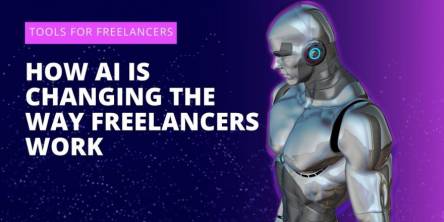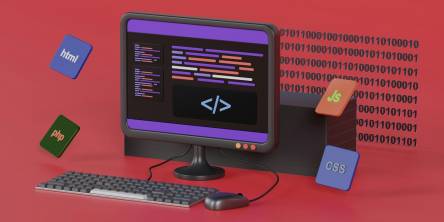Build Your AI Toolbox For Smarter Business Decisions

Artificial intelligence (AI) offers powerful tools that enhance efficiency, predict trends, and automate complex processes. However, with so many AI solutions available, building the right AI toolbox can be overwhelming.
This guide will help you assemble a strategic AI toolkit to empower your business with smarter decision-making. From AI learning tools that enhance team expertise to predictive analytics platforms that forecast market shifts, we’ll explore the must-have technologies that can transform your operations.
1. AI Learning Tools: Upskill Your Team for the Future
Before deploying AI solutions, ensure your team can leverage them effectively, especially with advanced features like generative AI tools reshaping workflows. Investing in AI learning tools empowers employees to interpret AI-driven insights, enhance content production, and integrate these technologies seamlessly.
- Online Learning Platforms: Specialized AI and machine learning courses from top institutions, catering to all skill levels, including AI-powered UI tools and data-driven content strategies.
- Open-Source AI Hubs: Free resources, tutorials, and datasets for hands-on learning, ideal for teams exploring generative AI tools for marketing content or automation.
- Cloud-Based AI Labs: Combine AI education with practical business applications, such as optimizing search engine performance or scaling news articles creation.
By equipping your workforce with AI literacy, you maximize the return on investment (ROI) of your AI tools while fostering a culture of innovation.
2. Predictive Analytics: Anticipate Market Trends
One of the most powerful AI applications is predictive analytics, which helps businesses forecast customer behavior, demand fluctuations, and operational risks. Below are the top predictive analytics tools:
- Advanced statistical software: Uses machine learning to uncover hidden patterns in data.
- Cloud-based AI platforms: Integrate predictive models with scalable computing power.
- Data visualization tools with AI: Enhance reporting with predictive insights.
Businesses leveraging these tools can explore a list of articles for deeper insights, address user questions with AI-driven answers, and gain an advanced experience in market trend analysis.
3. Natural Language Processing (NLP) for Customer Insights
Understanding customer sentiment is crucial for improving products and services. NLP-powered tools analyze reviews, social media, and support tickets to extract actionable insights. Here are the leading NLP solutions:
- Text analysis software: Automates sentiment and keyword extraction from customer feedback.
- Deep learning language models: Enhance search and chatbot interactions.
- Enterprise NLP platforms: Detect emotions and trends in unstructured data.
With NLP, businesses can refine messaging, enhance customer support, and identify emerging market needs.
4. AI-Powered Automation: Streamline Repetitive Tasks
By 2029, autonomous agentic AI will independently resolve 80% of routine customer service inquiries without human involvement, cutting operational costs by 30%. From invoice processing to customer service, AI-driven automation eliminates manual work, reducing errors and freeing up employees for strategic tasks.
Leveraging current capabilities like speech recognition, code generation, and full-text search, businesses can transform workflows with precision and speed. Here are some AI-powered automation tools to consider:
- Workflow automation platforms: Connect apps for seamless task automation.
- Robotic process automation (RPA) software: Handles repetitive back-office tasks.
- AI-powered chatbots: Automate customer interactions and content generation.
Automation not only cuts costs but also accelerates operations, allowing businesses to scale efficiently.
5. AI-Driven Decision Intelligence Platforms
Some AI tools go beyond analytics—they recommend actions based on real-time data. Decision intelligence platforms combine AI, machine learning, and business rules to guide leaders in making optimal choices. Here are the top decision intelligence tools:
- Enterprise AI platforms: Help businesses integrate and analyze complex datasets.
- Automated machine learning (AutoML) tools: Simplify model-building for precise decision-making.
- AI-powered business intelligence suites: Provide insights for finance, healthcare, and retail.
These platforms turn raw data into strategic recommendations, ensuring every business move is backed by intelligence. With quick access to real-time insights and secure access protocols, businesses can trust these tools for sensitive decision-making.
6. AI for Enhanced Security and Fraud Detection
As businesses adopt AI-driven solutions, safeguarding data and preventing fraud becomes paramount. AI-powered security tools proactively detect anomalies, mitigate risks, and ensure compliance. Here are key technologies to fortify your business:
- AI-Powered Threat Detection Systems: Monitor network activity in real-time to identify suspicious behavior. Use machine learning to adapt to evolving cyber threats.
- Fraud Prevention Platforms: Analyze transaction patterns to flag potential fraud. Deploy NLP to detect phishing attempts in emails and messages.
- Identity Verification Tools: Leverage facial recognition and biometrics for secure authentication. Automate compliance checks with regulatory frameworks (e.g., GDPR, HIPAA).
By integrating AI-driven security tools, businesses can protect sensitive data, build customer trust, and reduce financial losses from breaches.
Bottom Line
Building an AI toolbox involves strategically selecting tools that align with your business objectives, starting with AI learning tools to upskill your team, followed by integrating predictive analytics, NLP, automation, and decision intelligence to improve efficiency and decision-making. Businesses that harness AI strategically will outperform competitors, deliver exceptional customer experiences, and accelerate growth.
Similar Articles
AI agents are no longer an experiment in financial institutions. They are becoming the operational engine that powers real time decisioning, proactive fraud defense, precise risk scoring, and automated compliance workflows.
Banks are facing a moment of truth. Customer expectations are rising faster than most institutions can reshape their operating models.
How AI SDRs turn first contact into booked meetings with smart outreach strategies in this step-by-step journey breakdown.
How AI is transforming freelancing by boosting productivity, streamlining tasks, and reshaping the future of independent work.
AI chatbots are reshaping scam prevention with real-time detection, deepfake defense, and personalized protection against cybercriminals.
When I first started working in branding, creating a logo was a long and expensive process. Ordering from a designer required weeks of discussions and a budget that small businesses often couldn’t afford.
Generative AI is not just another addition to the toolbox of products; it will soon serve as the co-pilot for the entire lifecycle process, including discovery and delivery.
Learn how AI code generation speeds up software development by reducing repetitive tasks, improving code quality, and supporting Agile and DevOps teams.
Explore how AI is reshaping the workforce, from emerging jobs and essential skills to global opportunities, and learn how to adapt and thrive in an AI-driven economy.









